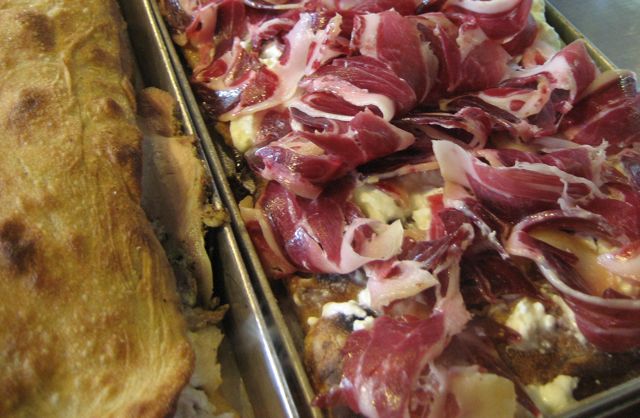
When my friend Evan Kleiman was in town in October, we walked into Pizzarium and she took one look at the color-packed counter full of pizza and declared: this guy’s an artist! She hadn’t even tasted the pizza yet. She was referring to how it all looked, arrayed beneath the glass case, a mosaic of colors: rosy coppa, crimson radicchio, pure white cacciotta, mint green spinach.
“I mean look at this,” she said, eyeing the pizza above, “This guy plays with his ingredients like a painter plays with his palette. He obviously took some of the ricotta – pure creamy white – and then grabbed the coppa – with it’s pinky tones, and painted the pizza with it.”
During the pizza class I took last week, with the artist-behind-the-pizza, otherwise known as Gabriele Bonci, I got a chance to experience pizza topping alla Pizzarium first hand. The second evening of the two-day class was entirely devoted to toppings. We had learned to make and bake the dough, now we got to get creative.
For the dough, see my post from the yesterday. We learned to mix, lay it out in the pan, and either leave it bianca – drizzled with a bit of oil and salt – or rosso, with just some pelati on top. In Bonci’s world, you do this first: prime the canvas, then start layering on the tastes only AFTER you’ve baked it.
Did you hear that? No piling on of cheeses, vegetables and meats until the pizza is completely cooked. Remember, this is Pizza al Taglio we are talking about, not small round, single serving sized pizzas. (For more on that, see this pizza post)
So the procedure is as follows.
Make dough.
Let rise.
Lay dough in pan.
Drizzle with oil, or top with a very thin layer of tomatoes.*
Bake.
Let cool slightly.
Top!
*(by the way, the tomatoes are simply canned pelati, seasoned with a bit of olive oil and salt, not cooked)
There is reason behind this method of course. First of all, the crust isn’t burdened with heavy toppings, and so remains crisp, airy and light. No watery mozzarella weighing things down. No ethereal bits of prosciutto getting burnt.
And the added extra-cool bonus of this method? You can bake the crusts ahead of time, and finish them off at the last minute for your pizza party. Makes you want to try this at home, right?
So, on to the toppings. Some of the toppings are added to the cooled then reheated pizza, and left as is, without a trip back into the oven. Some, including cheeses, make a trip back to the oven just till the cheese melts, and are then finished with other ingredients that will remain uncooked. It’s all up to you.
This is where you can let your imagination run wild. But even Bonci has some rules. For instance, never more than three toppings. “That’s a balanced pizza,” he says, “Anything more would be too much.” (did you hear that Elisia? Three is not too much, no matter how many of the three are pork!)
Ingredients: Does it go without saying that you should use the best possible toppings for your pizza? The mozzarella should be the best you can get, and if you can get a treccia (braid) this is the best consistency for pizza (less watery). Do not go to all this trouble to make the dough, only to top it with less-than extraordinary ingredients. This is the place to use your goat cheese caciotta, the coppa you got from Abruzzo, the baby spinach from the farmer’s market.
And do think about colors. There is a reason certain foods look good together. “Take mozzarella, tomatoes and basil,” mused Bonci, “Sure, they look good together, but they also perfectly balance creaminess, acidity and freshness. Tastes follow colors naturally.”
Bonci didn’t give us any printed recipes for toppings, but just created in front of our eyes, with the palette of ingredients he had brought to class. So I’ll share some of these, hoping they inspire you. I know the pizza looks pretty good in these photos. But you want to know the truth? It tasted even better. 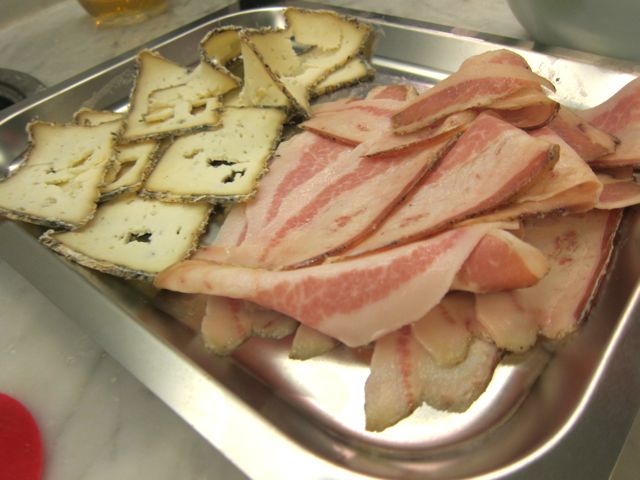
Ingriedients matter when topping your pizza: Very rare Conciato di San Vittore, a goat cheese aged with 15 herbs and Guanciale cotto al Vino. 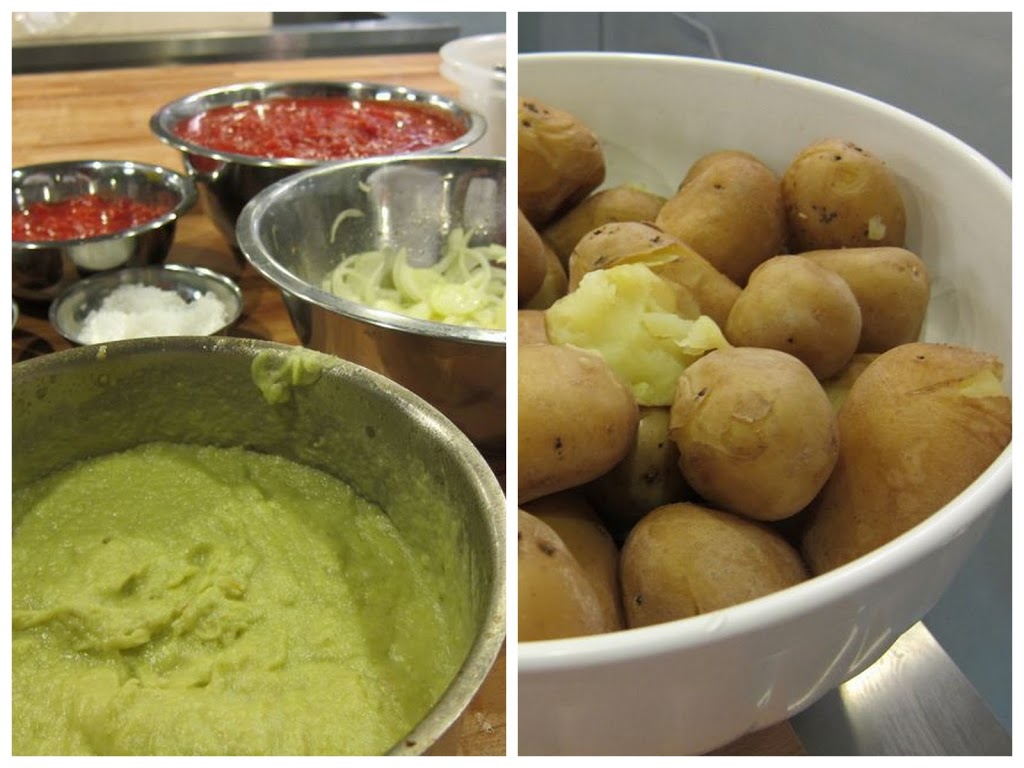
Pureed cavolo romano, onions dressed in olive oil, pelati and steamed potatoes.
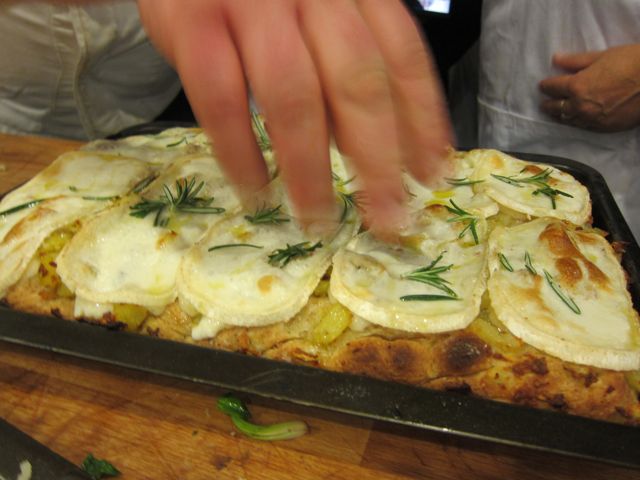
Judy’s pizza, first cooked with a layer of potato, cooled, then finished slices of pecorino and sprigs of fresh rosemary, which goes back in the oven to melt the cheese..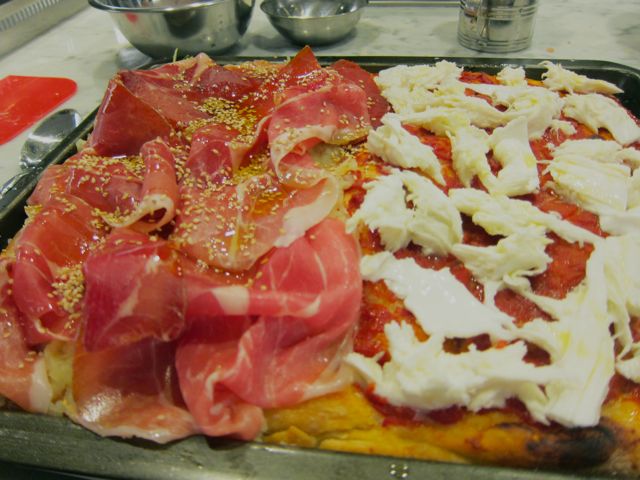
Gabriella’s pizza, half bianca and half rosso. The red half topped with mozzerella, the white with ribbons of prosciutto and a storm of sesame seeds. 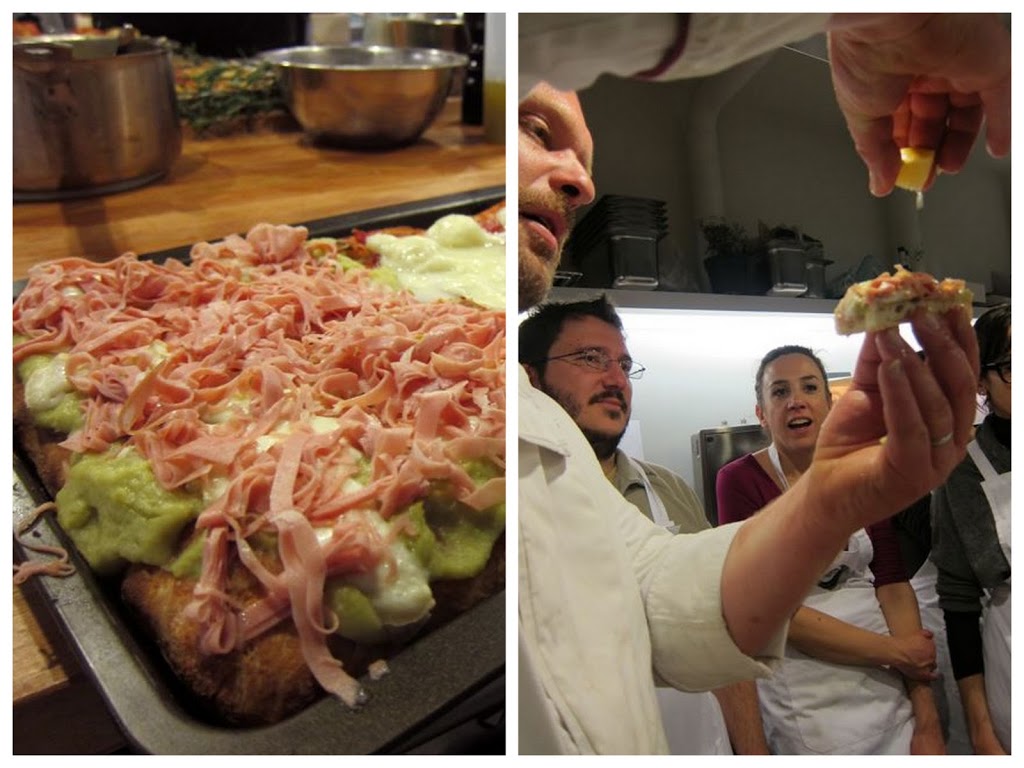
This pizza bianca was baked, cooled and then topped with a layer of brocolo puree and grated provolone, before going back in the oven to melt the cheese. Next layer: thin ribbons of mortadella. Each portion came with it’s own lemon wedge, to be squeezed on just before eating.
If you do want to create some of these pizzas, and are in Rome, you can find the Guanciale Cotto al Vino and the Conciata at D.O.L. (Di Origine Laziale) an amazing new store that opened recently. Visit if you can, but it’s way out in Centocelle. They also have an online shop.
Pizzarium
Via della Meloria 43
06 397 45416
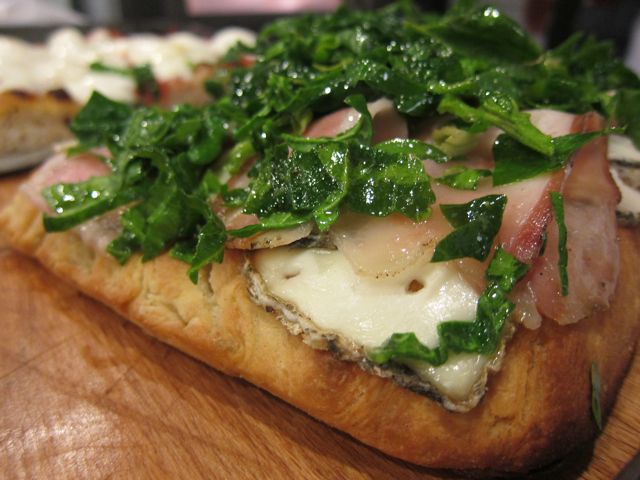
LOVE this pizzas! :))
Wow, that’s really Pizza Art! Yum, yum!
aahhh… This looks like a slice of heaven!!! I can’t imagine how delicious these pizzas were with all the fresh local ingredients!!
Gorgeous, gorgeous toppings! It makes sense to bake the dough first and then add the toppings…
Elizabeth…you mention the pizza class above….can you recommend a pizza class we can attend when in Rome? My wife and I will be in Rome for about 3 weeks starting in April.